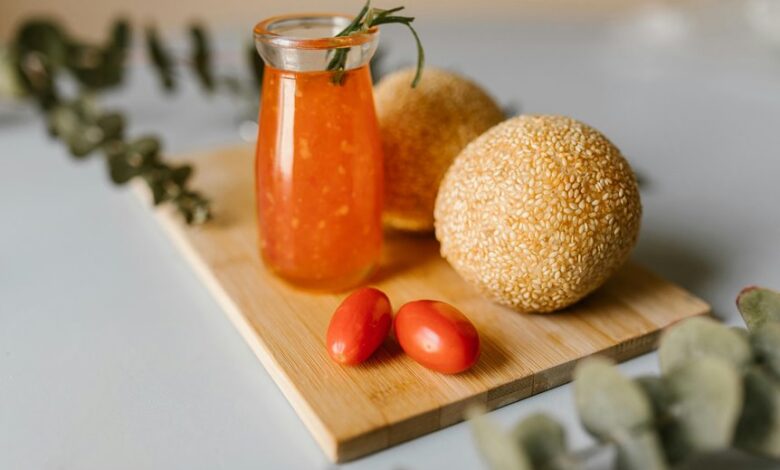Easy Filipino Picadillo Recipe: Filipino Version of Picadillo

The Easy Filipino Picadillo recipe offers a flavorful take on a beloved classic. Ground meat, vibrant vegetables, and aromatic spices come together to create a dish that is both comforting and versatile. This variation allows for regional adaptations, making it a true reflection of Filipino culinary traditions. As one explores the ingredients and cooking methods, the rich history and potential for personalization become apparent, inviting a deeper exploration into this cherished meal.
Ingredients Needed for Filipino Picadillo
To create a delicious Filipino Picadillo, one must gather a variety of fresh and flavorful ingredients that come together to form this hearty dish.
Essential components include ground meat, vegetables, and spices, all sourced from local markets for freshness.
Utilizing the right cooking equipment, such as a sturdy skillet or pot, enhances the preparation process, allowing the vibrant flavors to meld beautifully.
Step-by-Step Cooking Instructions
Once all the ingredients are prepared, the cooking process for Filipino Picadillo begins by heating a generous amount of oil in a sturdy skillet over medium heat.
The ground meat is added, employing essential cooking techniques to ensure even browning.
Aromatic spices and vegetables follow, creating rich flavor profiles.
As ingredients meld, the dish transforms, promising a delightful culinary experience that resonates with freedom and tradition.
Tips for the Perfect Picadillo
Achieving the perfect picadillo hinges on two crucial aspects: the quality of ingredients and the finesse of cooking techniques.
Fresh, high-quality produce and meats elevate the dish, creating a rich flavor profile that is truly authentic.
Additionally, mastering cooking methods can significantly enhance texture and aroma, turning a simple meal into a culinary delight.
Ingredient Quality Matters
Quality ingredients serve as the foundation for a delicious picadillo, transforming this traditional Filipino dish into a culinary delight.
Utilizing fresh ingredients, such as ripe tomatoes and vibrant bell peppers, enhances flavor and texture. Furthermore, selecting quality meats ensures a tender and savory base.
These elements combined create a picadillo that not only satisfies but also celebrates the rich culinary heritage of the Philippines.
Cooking Technique Tips
Mastering the cooking techniques for picadillo can elevate this beloved Filipino dish to new heights.
Employing proper sautéing techniques enhances the base flavors, allowing onions, garlic, and bell peppers to meld beautifully.
Additionally, practicing flavor layering by adding ingredients gradually creates depth and complexity.
This thoughtful approach ensures each bite is rich and satisfying, making the picadillo an unforgettable culinary experience.
Serving Suggestions
When it comes to serving Filipino Picadillo, a few thoughtful suggestions can elevate the dining experience.
Pair it with warm jasmine rice or crusty bread to soak up the flavorful sauce. Ideal serving sizes typically range from one to two cups, depending on appetite.
For added flair, garnish with fresh herbs or lime wedges, enhancing both presentation and taste. Enjoy the freedom of customizing your plate!
Variations of Filipino Picadillo
Filipino Picadillo showcases a delightful range of variations that reflect the diverse culinary landscape of the Philippines.
Each region boasts its own unique twist, incorporating local ingredients and distinct cooking methods that enrich the dish’s flavor profile.
Additionally, creative substitutions can elevate traditional recipes, inviting cooks to explore personal interpretations of this beloved classic.
Regional Variations Explained
Across the diverse regions of the Philippines, picadillo evolves into unique interpretations, showcasing local ingredients and culinary traditions. Regional differences reflect rich cultural influences, from the use of coconut in Bicol to the addition of sweet plantains in Mindanao. Each variation tells a story, connecting the dish to its roots.
| Region | Key Ingredient |
|---|---|
| Luzon | Green peas |
| Visayas | Sweet plantains |
| Mindanao | Coconut milk |
Unique Ingredient Substitutions
The versatility of picadillo allows for a myriad of unique ingredient substitutions, reflecting personal tastes and available resources.
Here are four popular ingredient swaps to consider:
- Ground turkey for beef
- Quinoa instead of rice
- Sweet potatoes in place of traditional potatoes
- Green bell peppers as an alternative to red
These unique substitutions enrich the dish, catering to diverse preferences while maintaining its essence.
Cooking Methods Differences
While exploring the various cooking methods for picadillo, one can discover how these techniques influence the dish’s flavor and texture.
Traditional sautéing enhances the meat’s richness, while slow-cooking melds flavors deeply, creating a savory harmony.
Alternatively, using a pressure cooker intensifies the flavor profiles quickly, appealing to those seeking convenience without sacrificing taste.
Each method offers a unique twist on this beloved Filipino classic.
Storing and Reheating Leftovers
To ensure that the rich flavors of Filipino picadillo are preserved, proper storage and reheating methods are essential.
Here are some tips for effective leftover storage and reheating methods:
- Allow picadillo to cool before refrigerating.
- Use airtight containers for optimal freshness.
- Store in the fridge for up to 3 days.
- Reheat on the stove or in the microwave, adding a splash of water to maintain moisture.
Conclusion
In the tapestry of Filipino cuisine, picadillo weaves a vibrant thread of flavor and tradition. This hearty dish, bursting with the essence of fresh ingredients and aromatic spices, invites all to gather around the table and share in its warmth. Whether enjoyed in its classic form or with creative twists, picadillo embodies the spirit of culinary ingenuity. As the last morsel is savored, the memories created linger, echoing the rich heritage that continues to nourish both body and soul.




